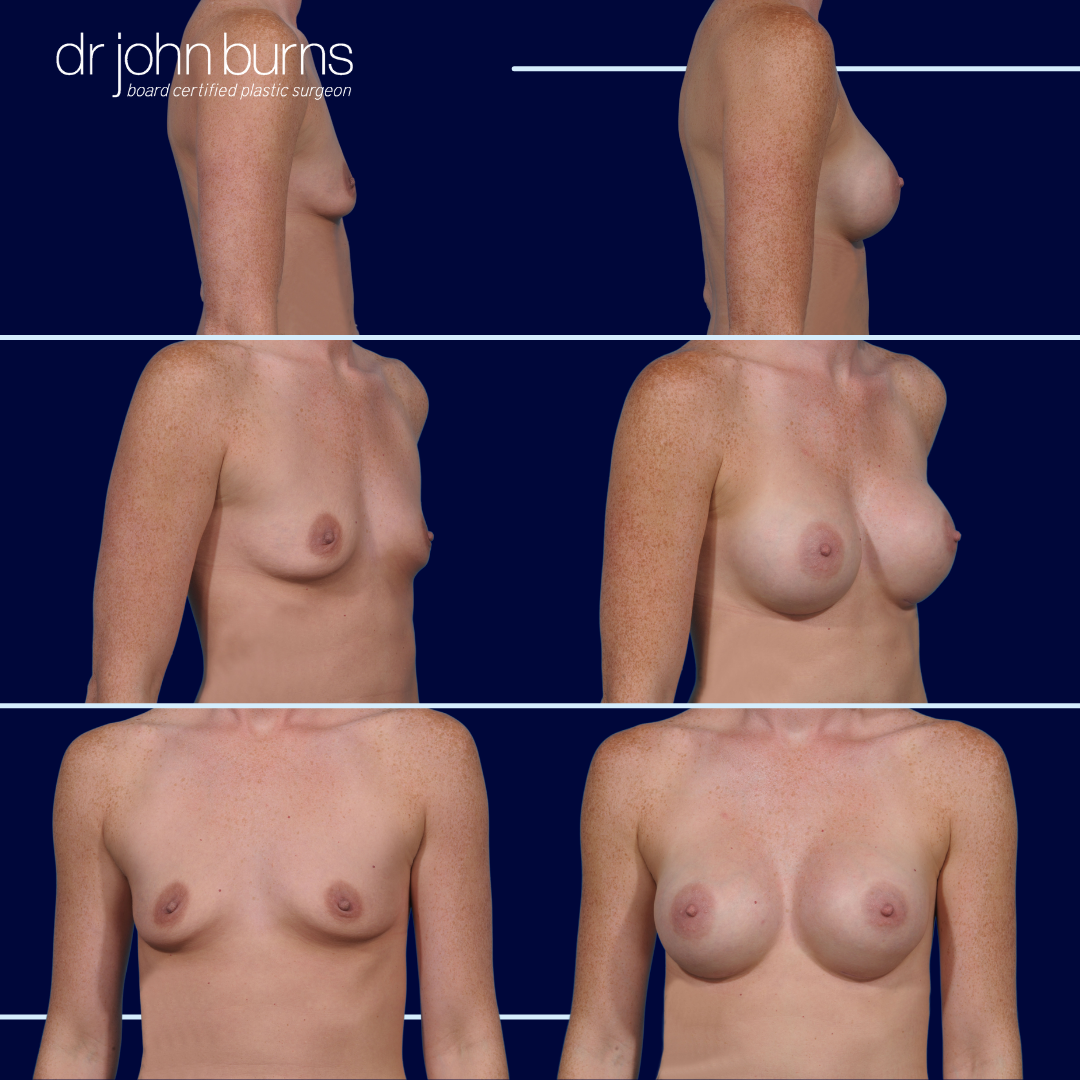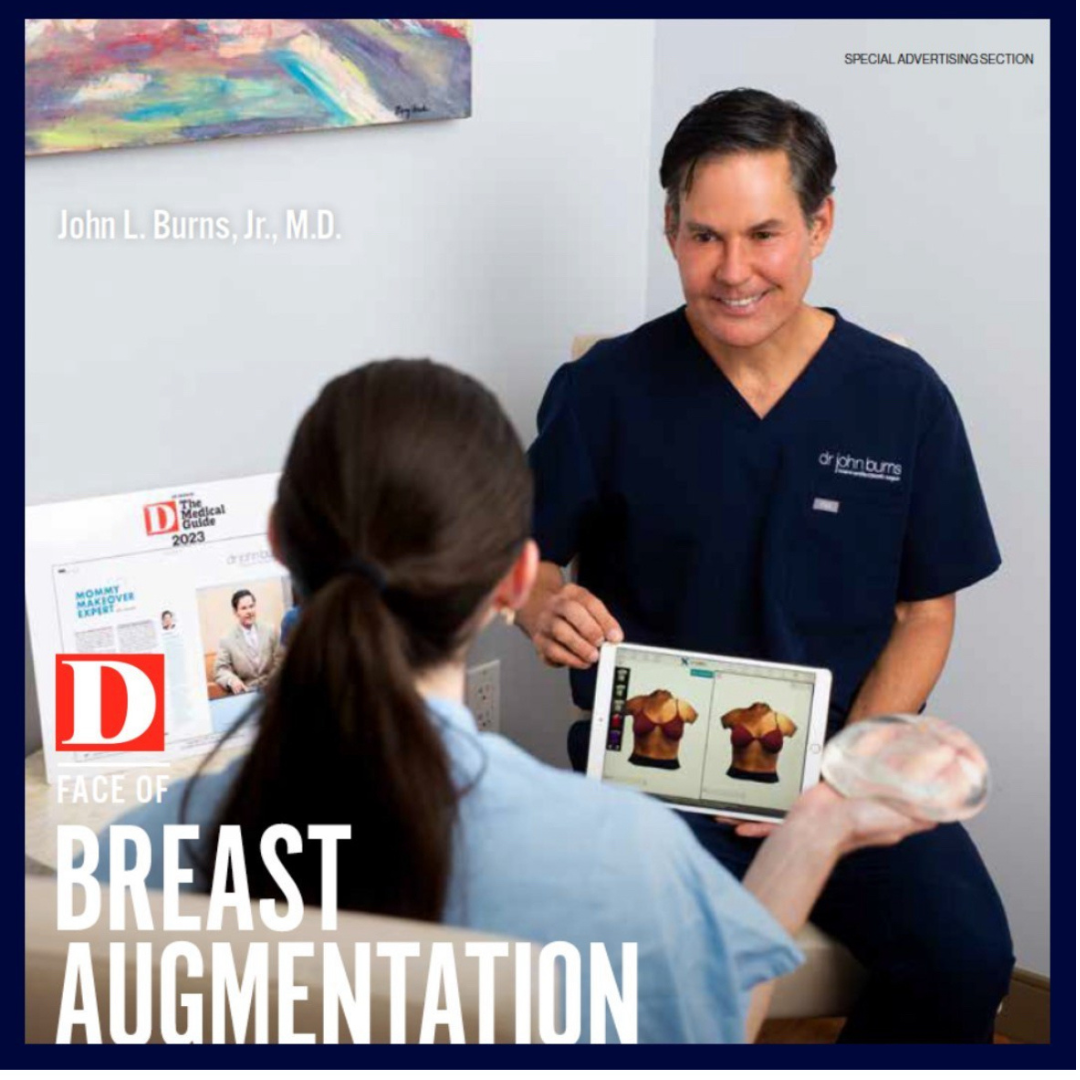February 2024
Breast Augmentation Scars:
Why No One Has To Know
There's No Way Around It- If You Want Implants,
You're Going To Have a Scar
Placing a breast implant ALWAYS requires an incision which will result in a scar. The trick is to hide the scar and care for it so that it is minimal.
Where Do Surgeons Place Scars in Breast Augmentation?

The placement of incisions for breast augmentation depends on various factors, including the patient's anatomy, the type of breast implants chosen, and the surgeon's preference. There are several common incision options for breast augmentation, each with its advantages and considerations. The main incision options include:
Inframammary Incision
The incision is made in the natural crease or fold beneath the breast, known as the inframammary fold. This incision site provides direct access to the breast pocket, allowing for precise placement of implants. It is well-concealed within the natural breast contour and generally heals with a well-hidden scar. This is by far the most popular site for placing an incision and is most commonly used.
Peri-areolar Incision
In this type of augmentation, the incision is made around the edge of the areola, where the darker pigmented skin meets the lighter skin. This incision can provide good access for implant placement, and the scar is usually well-camouflaged by the natural color transition at the areolar border. This is useful in patients that might be genetically predisposed to poor or dark scarring such as Asian or patient with Pacific Rim heritage. This incision is also useful in conjunction with a peri-areolar breast lift where the skin is tightened using an incision around the areola.
There are disadvantages, as this incision type requires dissection through the breast gland which can cause contamination of the implant when placing the implant and a higher rate of infection. Additionally, the stretching required can interfere with nipple sensation.
Trans-axillary Incision
The incision is made in the natural crease of the armpit. The transaxillary incision allows for the insertion of implants through the armpit, avoiding any scars on the breast itself. It is considered a remote incision site, offering a potentially more hidden scar. It should be mentioned, however, that this technique is less precise. Access to the implant pocket is limited, thus causing a much higher rate of breast revision. The implants often sit too low with the areola appearing too high. The incision can be visible in swimsuit tops and sleeveless shirts making it sometimes more difficult to conceal.
Transumbilical Incision (TUBA)
The incision is made near the belly button, and the implants are typically inserted using a tunneling technique. This technique is RARELY utilized. TUBA is less commonly used and has limitations. It is primarily associated with saline implants and may not be suitable for silicone implants or certain surgical techniques. The scar is located away from the breast area. The remote location does not allow for precise pocket dissection. It is difficult to place the implants under the muscle using TUBA incisions. Only saline implants can be used with this technique. The is a very high rate of revision with this technique.
The choice of incision site is a decision made by the patient in consultation with your plastic surgeon, taking into account:
- your personal preference
- your desired outcome, and
- the surgeon's expertise
Weighing The Scar Versus The Outcome
The inframammary breast crease incision for breast augmentation is often considered advantageous for several reasons, making it a popular and well-established option. Here are some of the reasons why the inframammary incision is often considered favorable:
Direct Access with Precision
he inframammary incision provides the surgeon with direct access to the breast pocket where the implant is placed. This direct access allows for precise placement of the implant in the desired position, minimizing the risk of asymmetry or malposition.
Visibility & Control
Surgeons often prefer the inframammary incision because it provides good visibility and control during the procedure. This allows for careful dissection and creation of a well-defined implant pocket.
Concealment within
Natural Crease
The incision is made within the natural crease or fold beneath the breast, known as the inframammary fold. This placement ensures that the scar is well-hidden within the natural contours of the breast, making it less visible.
Minimized Disruption to Breast Tissue
The inframammary incision typically involves minimal disruption to breast tissue and ducts. This can reduce the risk of interference with breastfeeding and nipple sensation.
Better Versatility For Your Unique Procedure
The inframammary incision is versatile and can be used for various types of implants, including saline and silicone implants, as well as different shapes and sizes. It is suitable for both subglandular and submuscular implant placement.
Lower Risk of Capsular Contracture
Some studies suggest that the inframammary incision may be associated with a lower risk of capsular contracture compared to other incision sites. Capsular contracture is a complication where scar tissue around the implant becomes thickened and may affect the implant's position and feel.
While the inframammary incision is commonly preferred, the choice of incision site ultimately depends on factors such as the patient's anatomy, surgeon's expertise, and individual preferences.
Silicone Gel
Breast Augmentation

Saline
Breast Augmentation

Silicone Gel
Breast Augmentation

Learn more:
4 Tips For Planning Your Breast Augmentation
Teardrop Breast Augmentation
Mini Breast Augmentation
What Does A Well-Healed Breast Scar Look Like?
Plastic surgery scars, whether on the breasts or elsewhere, go through different phases of healing, and the scar's look can change over time. After 6 to 12 months, the scar typically becomes a faint, white line that's hardly noticeable. There are three main phases of healing:
Inflammatory Phase 0-6 Days
Initial Response: The body reacts to the surgery with blood clotting and inflammatory cells to control bleeding and prevent infection.
Swelling and Redness: The incision site might look swollen, red, and warm, which is a normal part of the healing process.
Proliferative Phase (2 days to 3 weeks)
Tissue Repair: The body starts rebuilding and repairing the damaged tissue, with specialized cells called fibroblasts producing collagen for a strong scar. Collagen Formation: Initially, the scar may look raised and red as collagen, a skin-strengthening protein, is deposited.
Maturation or Remodeling Phase (3 weeks 2 years or more)
Scar Maturation: Collagen fibers realign and remodel, making the scar flatter, softer, and less red.
Final Appearance: The scar's ultimate look may take months to years to fully develop, with ongoing fading and improvement.
Throughout these phases, factors like genetics, skin type, wound care, and the type of surgery can influence the healing process and scar appearance. Following our scar care protocol helps optimize the result by doing everything possible to support healing.

How Dr. Burns Does
Breast Augmentation
Dr. Burns always uses the inframammary incision technique because it provides direct access to creating a proper pocket to house the breast implant.
Once your implant size and style have been selected, Dr. Burns will design your breast implant pocket to match your desired breast aesthetic.
There are generally three main options for creating the implant pocket: subglandular (above the chest muscle), subfascial (also above the chest muscle but under the fascia covering the muscle), and submuscular (partially or fully beneath the chest muscle) to prevent issues like animation deformity in fit patients.
The inframammary incision gives Dr. Burns the most versatility and best result while reducing risks that will lead to breast revision surgery.
Things You Can Do To Minimize Your Scars
Optimizing breast augmentation scars involves proactive measures before, during, and after the surgery to promote optimal healing and minimize the visibility of scars. While some factors like Fitzpatrick Skin Type and propensity for hypertrophic scarring and keloid scars influencing scarring beyond our control, there are steps you and can take to enhance the healing process and promote favorable scar outcomes. Here are several tips to optimize breast augmentation scars:
Follow Your Pre-op Instructions
Adhere to preoperative instructions provided by our practice. This may include avoiding smoking & vaping, which can impair circulation and hinder the healing process.
Follow All of Your Post-op Care
This is going to involve things like, avoiding sun exposure, limiting physical strain and strenuous exercise early on in the healing process. If you are instructed to wear a post-procedure bra, please follow those instructions to provide your breasts with additional support. Keep all of your follow up appointments with our clinic to ensure you're progressing nicely through your healing journey and any concerns can be promptly addressed.
Our clinic nurse will pour through these details with ou in your pre-op appointment at our clinic.
Scar Therapy Post-Surgery
Dr. Burns always recommends both medical grade scar recovery gel and silicone sheeting as ways to optimize scar quality. Both the gel and silicone sheeting are available through his laser and skin care center, EpiCentre.
Once the incision is healed Dr. Burns’ recommends laser therapy for the scars. The laser helps with the redness associated with fresh scars and optimizing the scars appearance as it goes through the healing process. Ask our team about our scar care packages available at EpiCentre.
What Our Breast Aug Patients Most Often Say
Breast augmentation is not only one of the most commonly performed procedures in plastic surgery but also has one of the highest satisfaction rates at >94%. Patients frequently are surprised with how easy the procedure is in terms of pain, discomfort, and recovery time. Many patients say they wish they had done the procedure sooner. After healing, many patients say they feel like the implants aren’t even there and just simply love the way their breasts look. The scar is rarely an issue for them once healed.
Schedule Your Complimentary Breast Aug Consult
Today with Dr. Burns



We always stress the important of selecting a board-certified plastic surgeon for your procedure.
Dr. John Burns in Dallas, TX, employs both artistry and skill in using advanced techniques that go beyond mere surgery – we specialize in creating results that are as natural yet transforming. Our team is curated to provide you with passionate and compassionate care throughout your journey. We are your advocates for a beautiful outcome that you will enjoy for years.
Dr. Burns offers complimentary consultations for women considering breast augmentation and breast revision surgery throughout the United States and the world.
You May Also Like
Holiday Beauty Guide 2024–2025 | Dr. John Burns & JOLA DALLAS
Top Aesthetic Trends of 2025 | Dr. John Burns Plastic Surgery Dallas
How Much Tissue Should You Remove With a Tummy Tuck?
Choosing the Perfect Implant Size for You
Stay In Touch
Follow us for news and information on plastic surgery procedures





